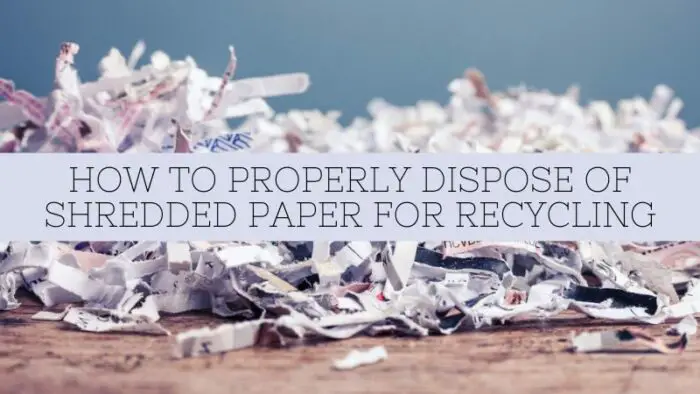Shredded paper can be recycled, but it is essential to follow specific guidelines to ensure successful recycling.
First, it is essential to ensure that the shredded paper is clean and free of contaminants such as food, liquid, or other materials. Contaminants can make the paper difficult or impossible to recycle and contaminate other recyclables in the recycling stream.
Second, keeping the shredded paper in a separate container or bag from other recyclables is generally recommended. This is because the small size of the shreds can make it more difficult for sorting machines to separate them from different materials.
Third, storing shredded paper in a secure container is generally recommended to prevent it from blowing away or becoming a litter problem.
While shredded paper can be recycled, it is essential to follow proper guidelines to ensure that it is processed correctly and does not contaminate other recyclables. Recycling shredded paper can also help to conserve natural resources and reduce waste in landfills.
Reusing Shredded Paper
There are several ways to reuse shredded paper:
- Composting: Shredded paper can be added to a compost pile as a carbon source, also known as “brown” material. The paper will break down over time and add nutrients to the soil.
- Packing material: Shredded paper can be used as a packing material for fragile items, such as dishes or glassware. The paper provides cushioning and can help to prevent breakage during shipping or storage.
- Pet bedding: Some pet owners use shredded paper for small animals, such as hamsters or guinea pigs. The paper is soft and absorbent and can be easily changed when soiled.
- Craft projects: Shredded paper can be used in various craft projects, such as making paper-mâché or paper mache bowls or decorations. It can also be used as a filler for pillows or stuffed animals.
- Garden mulch: Shredded paper can be used as a mulch to suppress weeds and retain moisture in the soil. The paper will break down over time and add nutrients to the earth.
There are many ways to reuse shredded paper, which can help reduce waste and conserve natural resources.

When Shredded Paper Gets Into a Landfill
When shredded paper is placed in a landfill, it will eventually break down over time due to the action of bacteria and other decomposers. Landfills are designed to minimize the environmental impact of waste by isolating it from the environment. However, the decomposition of organic materials such as paper can still produce methane, a greenhouse gas contributing to climate change.
In addition, when paper decomposes in a landfill, it can produce leachate, a liquid containing harmful chemicals and pollutants. Leachate can seep into the soil and potentially contaminate groundwater or surface water, posing a risk to human health and the environment.
By recycling shredded paper instead of disposing of it in a landfill, we can reduce the amount of methane and leachate produced and conserve natural resources. Recycling also helps to reduce the amount of waste in landfills and can help to extend the lifespan of these facilities.
How Shredded Paper Is Recycled
Shredded paper is typically recycled through a process called pulping. The shredded paper is mixed with water and chemicals during pulping to create a slurry or pulp. The pulp is then screened to remove contaminants or impurities, such as staples or paper clips.
The cleaned pulp is mixed with water and chemicals to create a “white water” mixture to make new paper products. The white water mixture is then poured onto a mesh screen, which allows the water to drain away and leaves a sheet of wet paper fibers on the net.
As the water drains away, the fibers bond together to form a sheet of paper. The sheet is then pressed and dried to remove any remaining moisture. After drying, the sheet of paper is rolled up and sent to a paper mill, where it is cut and processed into new paper products.
Recycling shredded paper involves several steps to clean and purify the fibers and create new paper products. Recycling shredded paper helps to conserve natural resources and reduce waste in landfills.
Conclusion
Shredded paper can be recycled, but it is essential to follow specific guidelines to ensure successful recycling. Contaminants, such as food or liquid, can make the paper difficult or impossible to recycle.
It is generally recommended to keep the shredded paper in a separate container or bag from other recyclables. Shredded paper can also be reused in various ways, such as packing material, pet bedding, or garden mulch.
When shredded paper is placed in a landfill, it will eventually break down and produce methane and leachate, which can negatively impact the environment. By recycling shredded paper instead of disposing of it in a landfill, we can reduce the amount of methane and leachate produced, conserve natural resources, and reduce waste.

